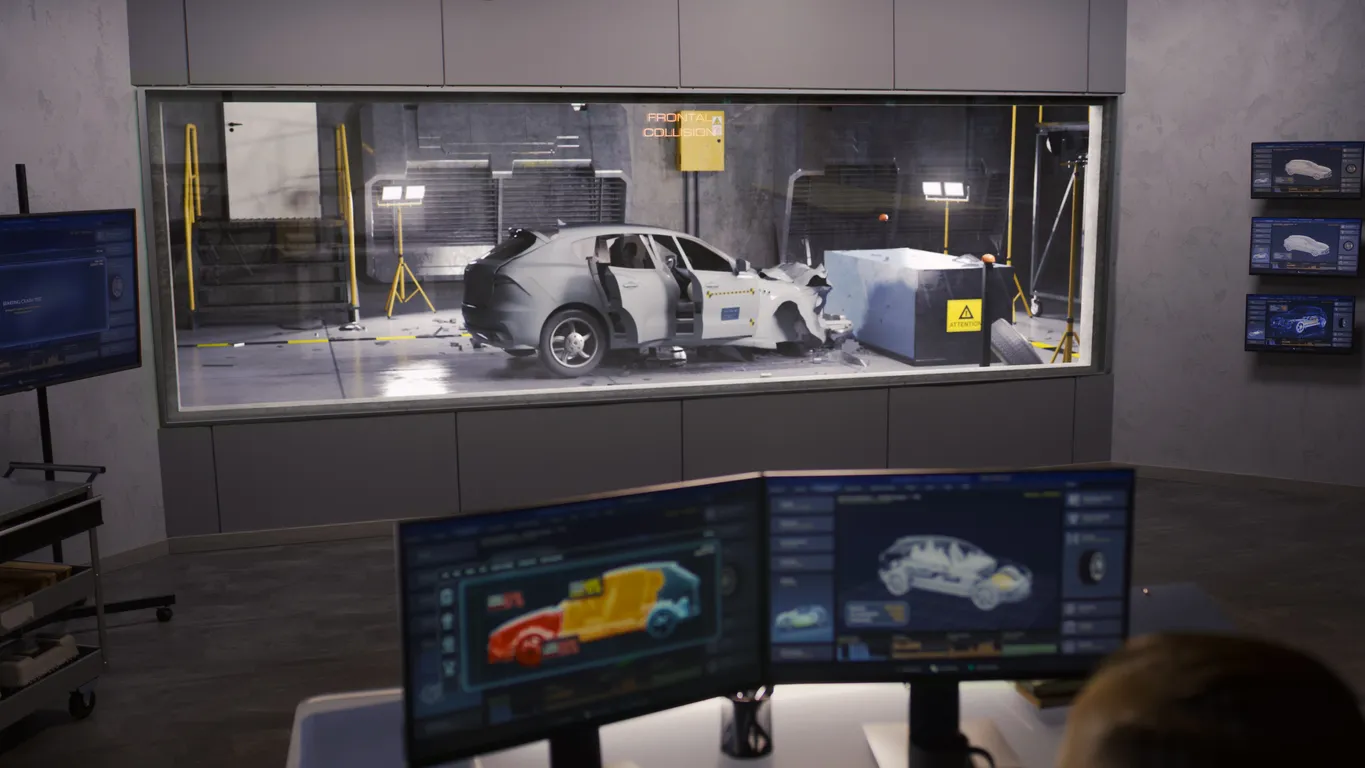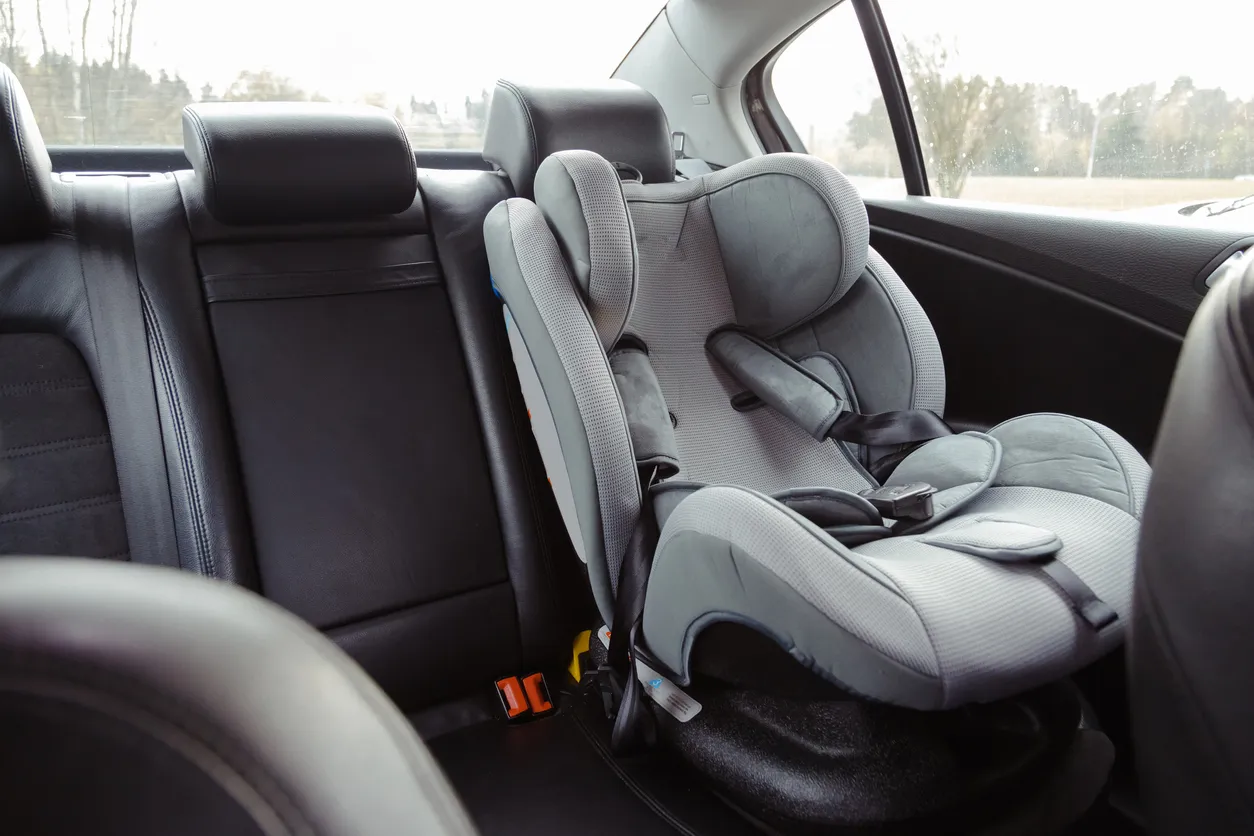What is a Crash Test, and How Does it Work

Most vehicles sold in the United States and in most other countries undergo a series of crash tests in a lab environment. These specialized tests take different vehicle models and crash them into concrete barriers at varying speeds and angles. Various high-speed cameras and advanced sensors capture exactly what happens to the vehicle and its passengers during the crash. All that information is given to the government and interested car buyers to let them know how safe a particular vehicle is. Car crash test results are one of the key tools that buyers have to choose the right vehicle for their families, and it's an important measurement that everyone should look at.
Tools For Accurate Crash Test Analysis
Specialized dummies are used to analyze car crashes effectively. Most of the time, the dummies are the size of an average man in the United States. Each dummy is designed to match a human body's shape, weight, and design. The materials selected even mimic the human body design down to the joints and how the spine works. The dummies are also equipped with measurement instruments, enabling accurate crash test results that offer useful information. The dummies rely on a series of accelerometers, load sensors, and motion sensors to determine how injured a person would be during an accident in specific car types and in different accident situations.
Painting the Dummies
Before running one of the test scenarios, researchers apply paint to different parts of the dummy's body that are most likely to be involved in an impact. One color gets applied to the head, another to the chest, and this continues for all the important areas of the body. Once the crash test scenario is complete, the sensor data from the dummy's integrated sensors is used to determine if any serious injuries occur. The interior is then examined for paint that shows where the dummy obtained those major injuries. Scientists use this information to make adjustments to make the vehicle safer for different crash situations.
Different Types of Car Crash Tests
Understanding the different types of crash tests can provide valuable insights into how cars protect their occupants during accidents. Below are some of the key car crash tests conducted to evaluate vehicle safety.
Frontal Tests
Frontal tests simulate head-on collisions, which are among the most common and severe types of car accidents. These tests involve crashing a vehicle into a solid barrier at a specific speed, typically around 35 to 40 mph. The impact is designed to replicate the forces experienced in real-world frontal crashes. The primary goal is to assess how well the vehicle's structure absorbs and dissipates energy to protect the occupants. Safety features such as airbags, seat belts, and crumple zones are evaluated for their effectiveness in reducing injuries.
Side Impact Tests
Side impact tests evaluate a vehicle's ability to protect occupants when struck from the side. These crash testings are crucial because side collisions often occur at intersections and can result in significant injuries due to the limited space between the occupants and the point of impact. The crash test typically involves a moving barrier crashing into the side of the vehicle at around 30 mph. It assesses the effectiveness of side airbags, door reinforcements, and the overall structural integrity of the vehicle in preventing intrusion and protecting passengers.
Roof Strength Test
The roof strength test measures a vehicle's ability to withstand forces applied to the roof, simulating a rollover scenario. This car crash test is essential for ensuring that the roof does not collapse and cause serious injuries to the occupants during a rollover accident. During the test, a metal plate is pressed against one side of the roof to evaluate its resistance to deformation. Vehicles that perform well in this test are more likely to protect occupants from head and neck injuries in real-world rollovers.
Rollover Tests
Rollover tests assess a vehicle's propensity to tip over during sharp turns or sudden maneuvers. These tests are particularly important for SUVs and trucks, which have a higher center of gravity and are more prone to rollovers. The test involves using a tilting platform to determine the vehicle's stability and how easily it can be tipped over. Vehicles with a lower risk of rolling over are rated higher, providing consumers with valuable information about their stability and safety.
Frontal Crash Tests
Frontal crash tests are similar to frontal tests but often involve more detailed and varied scenarios. These tests may include offset frontal crashes, where only part of the front of the vehicle impacts the barrier, simulating real-world collisions where the impact is not perfectly head-on. By examining different types of frontal impacts, these tests provide a comprehensive evaluation of the vehicle's frontal crashworthiness, highlighting areas that may require improvement.
Pole Test
The pole test assesses a vehicle's ability to protect occupants in a side impact collision with a narrow object, such as a utility pole or tree. This test is crucial because such collisions can cause severe intrusions into the passenger compartment. During the test, the vehicle is propelled sideways into a stationary pole at around 20 mph. The test evaluates the effectiveness of side airbags, door beams, and other safety features in preventing serious injuries to the occupants.
Car Seat Crash Test

Companies such as Consumer Reports independently crash-test car seats to determine their safety. These companies look at how infants and small children are hurt during different impacts while in various car seat types and develop car seat crash test ratings. Parents can use these ratings to find the safest seats for their children. The crash test ratings for car seats are based on how safe they are, as well as how easy they are to use.
Understanding Car Crash Testing Ratings
Crash test ratings are important measurements that help the government ensure only safe vehicles are being sold and to help car buyers choose the safest vehicle for their money. A few different organizations are involved in crash test ratings, but the two most often cited and used are the NCAP (New Car Assessment Program) from NHTSA and the IIHS test ratings. Understanding how the ratings are formed and what ratings mean will help you choose vehicles you can rely on. Combine this information with a reliable Vehicle History Search, and you'll know which vehicle is right for you.
NHTSA New Car Assessment Program
This car crash testing program crashes cars at 35 MPH in a few different scenarios and measures how likely a set of dummies is to be injured. The less likely the dummies are to be hurt, the higher the vehicle's safety rating.
IIHS Tests
IIHS stands for Insurance Institute for Highway Safety; it's a non-profit organization backed by insurance companies to test the most common new vehicles for safety.
Unlike the government's NHTSA, which looks closely at two major tests, the IIHS looks at the six vehicle crash test results. The tests are the following.
- Driver's-Side - Small Overlap on the Front
- Driver's Side - Moderate-Overlap on the Front
- Roof-Strength
- Side
- Passenger-Side - Small Overlap
- Head Restraint Testing
These tests are each different from what the NHTSA looks at, and they should be viewed as a compliment to what the NHTSA is doing. When evaluating a vehicle, you should look to see that it has a 4-star or 5-star rating from the NHTSA and a Top Safety Pick or Top Safety Pick + rating from the IIHS to ensure the vehicle is truly safe and reliable, according to most auto crash testing.
Cars Must Meet the Federal Motor Vehicle Safety Standards
Any car sold in the United States legally must meet the standards set in place by the FMVSS. These standards look at how a car handles specific crash situations, but also things like turn signal bulb brightness levels, airbags, seat belt force limiters, and more. The FMVSS standards are lower than NHTSA standards, but they are there to ensure unsafe cars aren't being added to the marketplace.
Crash test ratings are important indicators used to sell vehicles today. That's why the NHTSA performs its own tests and publishes its results to give drivers unbiased safety results to look at.
Is a Smart Car Crash Test Different?
Smart cars are so much different than full-sized vehicles, but they undergo the same crash tests overall. These vehicles are crashed at the same speeds and must undergo all the same scenarios. Smart cars drive on the same roads as other vehicles, so it's only natural to test them in the same ways.
These smaller vehicles are generally less safe than full-sized cars, but they are equipped with more extensive protective features in many cases, including a full roll cage. It's important to realize that most smart cars are less safe than full-sized vehicles, but they can keep their occupants alive in most crash test scenarios thanks to extensive safety equipment.
Crash Testing is Sophisticated and Important
Auto crash testing is essential to ensure that new cars sold today are safe and to help auto buyers choose the safest options when making a purchase. A great deal of thought and technology goes into vehicle crash testing, and you should look closely at ratings from the IIHS and the NHTSA before buying your next vehicle.
FREE Vehicle Search
- Accidents
- Problem Checks
- Title Records
- Recalls
- Values
- Specs
-
InfoPay, Inc. (dba GoodCar) is an Approved NMVTIS Data Provider
-
-












































